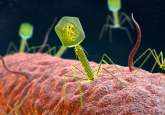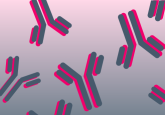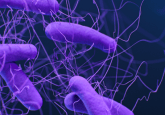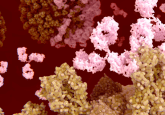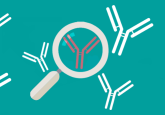Hostess with the mostest: studying host–pathogen interactions
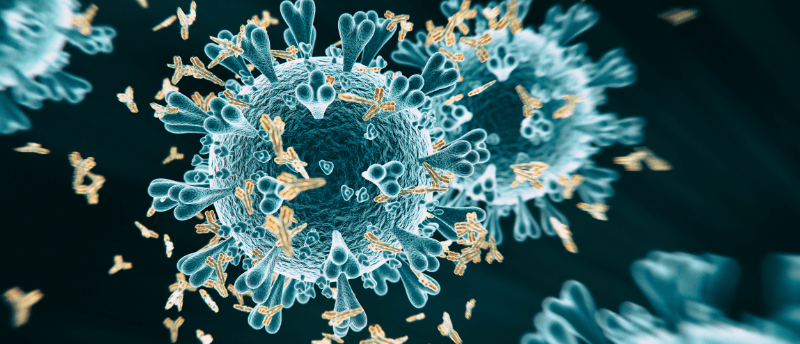

Pontus Nordenfelt (left, photo by Tove Smeds) is an Associate Professor and Senior Lecturer at Lund University (Sweden) who uses a range of techniques to study initial host–pathogen interactions. In this interview for our Spotlight on antibody discovery, we talk to Pontus about the role antibody discovery plays in his research, the discoveries this has enabled and how this research can contribute to the fight against antimicrobial resistance.
Could you please introduce yourself and give us an overview of your research?
I’m originally a trained engineer that ventured into medical research. I did my PhD at Lund University on phagocytosis by neutrophils, with a particular focus on bacteria-containing phagosomes. My first postdoc was local and related to the antibody response to streptococcal infections. I then decided to shift fields to broaden myself and spent a number of years at Harvard Medical School (MA, USA) working on integrin biology and leukocyte migration. Here, and after studies at the Marine Biological Laboratory at Woods Hole (MA, USA), advanced microscopy and image analysis became an important avenue for my future research. Currently, my group focuses on three areas: cell migration, microscopy and antibody biology in relation to cancer, infection and immunology.
Could you summarize the role antibody discovery plays in your research?
My strategy is to discover new functional human antibodies to pathogens and then use these to unravel molecular mechanisms of antibody function. By using human antibodies from convalescent patients, the likelihood increases that any discoveries that we make will be relevant.
What techniques do you use for antibody discovery and to assess antibody function?
We first bait B cells from convalescent patients with fluorescent antigens and then use mRNA from single B cells to build recombinant human antibodies. We then have a wide array of biophysical and functional assays that we have developed over the years to assess affinity, avidity, epitope, and activation of phagocytosis, complement, agglutination, neutrophil extracellular traps and more.
What discoveries have you made in this research?
Regarding antibodies, we have shown the importance of physiological niche for antibody-binding proteins of pathogens [1, 2] and that Fc-mediated opsonization is protective against SARS-CoV-2 independent of neutralization [3]. The most striking discovery so far is the dual-Fab cis binding mechanism that we found with an anti-streptococcal antibody. We found that with two antibodies binding to a similar epitope, only the one that could simultaneously bind to a second epitope on the same antigen could promote opsonization and in vivo protection [4]. Interestingly, we found that the bacteria attempt to counter this by recruiting fibronectin when such antibodies bind [5], creating a blocking scaffold together with the antibodies and reducing phagocytosis in the process. Finally, we have found that the antibody response during invasive streptococcal infection can lead to broad cross-strain protection [6], which is different from what many have previously thought and could be part of the explanation for the reduced number of infections seen in adults compared to children.
What challenges do you face in this research?
It has taken us many years to develop functional methods that are sensitive enough to reproducibly detect which antibodies are working and which ones are not. The experiments require patience and meticulous analysis. Even if we now can routinely find good antibodies, we still have much to learn about the molecular mechanisms to explain the biology, especially when you realize the complexity of class and subclass, multiple Fc receptors, cell types, mechanobiology, molecular orientation and additional receptors at play. To just name a few things that need to be considered.
How could your research contribute to the fight against antimicrobial resistance?
I believe that we can contribute in three ways. First, we now continuously develop new well-characterized and functional human monoclonals against pathogens that could be used for therapies and diagnostics, especially as adjuvant therapy together with antibiotics. Second, the insights we gain from figuring out how human antibodies work can help to design vaccines that will trigger the generation of highly effective antibodies. Third, an increased understanding of pathogen response to antibodies and how they counter them could inform strategies for both antimicrobial therapies and vaccine development.
What’s next for your research?
We are continually expanding our library of antibacterial and antiviral pathogen antibodies, and we work on the development of more advanced mechanistic analyses. I hope to be able to combine the live imaging and molecular sensor approaches that we have previously used to deduce integrin mechanisms [7,8] and apply these to functional antibody studies.
